Dental implantation
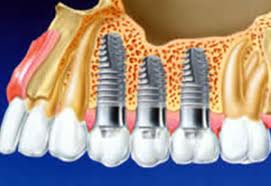
Dental implantation has been used for the past thirty years.
To date, dental implantation has gained great popularity and promise and is one of the most modern therapeutic methods in dentistry.
Implantation involves implantation in the jawbone of structures that replace the roots of the teeth and are a support for prostheses.
The operation allows the wide use of the fixed prosthetics method, thereby increasing the effectiveness of treatment in terms of aesthetics and functionality.
Dental implants are most often made of titanium alloys. Dental implantation has such advantages as reliable restoration of lost teeth and their high esthetics.
Indications
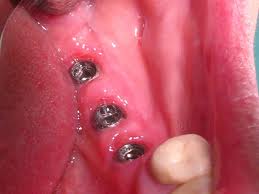
- Unilateral and bilateral end defects of dentitions.
- The absence of one tooth.
- Complete absence of teeth on the upper or lower jaw.
- Limited defects of four or more teeth.
- Atrophy of the alveolar processes of the jaw.
- The inability of patients to use removable teeth associated with the characteristics of the profession, intolerance to acrylic plastic, the presence of a gag reflex to a foreign body in the oral cavity.
- Digestive system diseases due to lack of teeth and insufficient chewing of food.
- Age from 18 to 70 years.
Contraindications
Absolute contraindications for dental implantation are:
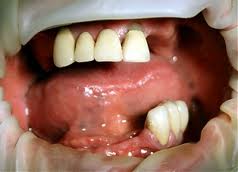
- The presence of acute infectious disease.
- Diseases of the skeletal system.
- Condition after radiation therapy in the neck and head.
- Pathological changes in the soft tissues of the oral cavity.
- Diseases of the blood and blood forming organs.
- CNS diseases, both congenital and acquired.
- The presence of pathological formations on the lower and upper jaws.
- State of pregnancy.
- Pathology of the immune system.
- Patient is less than 18 years old.
- The presence of mental illness.
- Addiction and alcoholism.
- Oncological diseases.
- Connective tissue diseases.
- Tuberculosis disease and its complications.
Absolute contraindications are associated with the general condition of the body and completely hinder the implementation of surgical intervention.
Relative indications:
- Poor oral hygiene.
- Inflammatory diseases of the mucous membranes of the oral cavity.
- Periodontal disease.
- Osteoporosis of the jaw bones.
- Diabetes mellitus in the stage of decompensation.
- Bruxism.
- Smoking.
- Malocclusion.
- Arthroso - arthritis of the temporomandibular jaw joint.
Relative contraindications require elimination before implantation. For example, with a lack of bone tissue, it may be necessary to build up.
The decision on the possibility of dental implantation is made jointly by the orthopedist and surgeon. In some cases, the conclusion of an orthodontist and periodontist may be required.
Stages
The process of dental implantation is carried out in several stages:
- Preparatory.
- Surgical.
- Orthopedic.
Preparatory stage
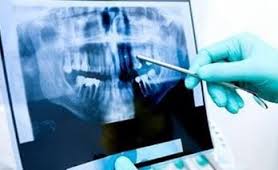
- Preparing the patient for dental implants is a crucial stage in the successful operation and prevention of postoperative complications. At this stage, a medical history is collected (dental, allergological, general medical).
- An assessment of the state of the oral cavity and the general condition of the body. To this end, an x-ray of the jaw is made, examination of the soft tissues and the mucous membrane of the oral cavity, the density of the jaw bone is estimated.
- An equally important study before implantation is a CT scan, which allows you to assess the condition of the tissues of the maxillofacial region. The resulting three-dimensional image makes it possible to see the temporomandibular joints, the bottom of the maxillary sinus, the position of the mandibular canal.
- In some cases, examination and treatment of other organs may be necessary to prepare for the operation.
- If necessary, the doctor carries out the rehabilitation of the oral cavity, with the obligatory professional cleaning of teeth. Sometimes removal or replacement is required (we are talking about the incompatibility of various materials) of previously installed orthopedic structures.
- At the stage of preparation for implantation, contraindications to its implementation are determined. They can be both absolute and relative.
- Production of a diagnostic model, surgical template, wax model.
- Preparation of a treatment plan and conclusion of an agreement.
Surgical stage
Installation of implants can be carried out according to one of two existing methods: one-stage and two-stage.
- In one-stage implantation, the non-separable implant design is installed, the abutment of which protrudes into the oral cavity above the gum.
- Two-stage implantation is a more common technique. For its implementation, a collapsible implant is used.
Orthopedic stage
- Removing casts from the dentition.
- Dental gypsum models are made.
- Making a bridge or tooth crown.
Operation sequence
The operation is performed in the dentist's office. Its duration depends on the number of implantable implants (from 30 minutes to several hours).
At the first stage:
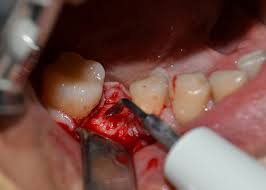
- Local or general anesthesia.
- The implant is inserted into the jawbone.
- A bone bed is formed in the jaw bone, after which an implant is screwed into it. Implant placement is atraumatic. This intervention is less traumatic than tooth extractions.
- After installing the implants, the wound is sutured tightly and does not come into contact with the oral cavity.
- Removal of sutures 7 to 10 days after surgery.
In the early postoperative period, weakness, soreness and swelling may occur, which disappear by the end of the third day from the moment of implantation.
Recovery of the patient's disability occurs five days after surgery.
The second stage of dental implantation:
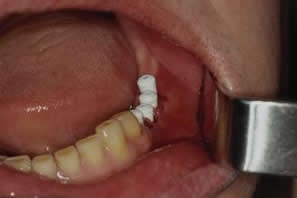
At this stage, microoperations are performed in the area of the installed implant.
- Open the implant.
- Remove the plug.
- Gum shaper is installed.
Two weeks later, the gingiva former is removed, and an abutment is installed instead.
Engraftment
The process of engraftment (osseointegration) on the lower jaw lasts from three to four months, on the upper - no more than six.
During the implant engraftment period, a visit to the dentist is required several times.
Signs of successful implant engraftment:
- lack of pain during testing for implant mobility;
- the presence of sonorous knock during percussion.
Titanium is an ideal biocompatible material, however, the individual characteristics of the body cannot guarantee the complete absence of problems associated with its rejection.
According to statistics, implants are rejected in 2 - 4% of all cases.
Signs of rejection are the light mobility of an installed titanium rod. In this situation, the implant is removed and a new one is inserted after tissue healing.
Video: “Dental implantation”
Postoperative care
In the postoperative period, antibacterial, analgesic, restorative, desensitizing therapy is carried out. Calcium supplements and vitamins are prescribed.
- Immediately after surgery, the patient should apply ice on the face at the implant placement site for 20 minutes 5 to 6 times a day.
- Rinsing of the oral cavity with antiseptic solutions is prescribed at least 10 - 15 times a day.
- A soft toothbrush is recommended for brushing your teeth, and care must be taken in the area of sutures.
- Food should be liquid, mashed and soft.
Laser dental implantation
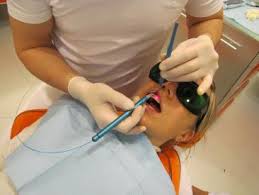
The use of laser dental implantation deserves special attention today. The difference of this technique is that it is carried out without the use of a scalpel.
Benefits:
- The procedure is less painful.
- More comfortable.
- It is carried out with a high degree of accuracy.
- The speed of the operation.
- The absence of inflammatory complications.
Life time
Proper planning, the use of proven techniques for the operation will allow the implants to function for a sufficiently long time.
With excellent hygienic care for the oral cavity and dental structures, as well as regular preventive examination by the dentist, it will allow you to use the installed implants for more than 25 years.
Cost
Dental implantation of teeth is a procedure the price of which depends on the category of the dental clinic, the level of complexity of the clinical case, the patient's requirements for aesthetics, technology, quantity and cost of the necessary implants.
The price may include diagnostics, necessary tests and postoperative observation.
| Service | Price of service in rubles |
| Implant placement surgery (surgical stage) | 23000 |
| Implant placement with direct loading | 34000 |
| Tooth extraction with simultaneous implant placement | 32000 |
| Orthopedic stage | from 12000 |
Reviews
- I got two lower implants in the area of 6 and 7 chewing teeth. The operation lasted half an hour. After the procedure, there was no swelling or pain. At night I drank a tablet of anesthetic to remove the unpleasant feeling of tension at the implant site. The next day I went to work, there was no pain. There was only an unpleasant pressing sensation, which disappeared after three days.
- At 60, I lost almost all my teeth. I wore removable dentures, which were very uncomfortable, rubbed the gums. The doctor suggested installing implants. I did not dare for a long time, because I'm afraid of pain. But the doctor convinced me that it was no more painful than removing the tooth. At the first stage, 6 implants were placed on my upper jaw under local anesthesia. The procedure took about one hour. The first week was soreness, but quite moderate. She took painkillers and antibiotics. Six months later, put the crowns from cermets.
- There was a cyst on the lower jaw (5 tooth). The dentist said that it must be removed with the tooth. In one visit, the doctor removed the cyst and installed the implant.The first day I drank painkillers, then by the third day the pain had passed. Five months later, they put a crown on me.
- Wore removable dentures. The dentist said that you can put implants. I agreed. The installation of 8 implants was quick, anesthesia was performed before the operation. In the postoperative period, everything went fine, took antibiotics and drank pain medication at night. All unpleasant sensations disappeared by the fifth day. When the implants took root, I installed zirconium crowns. Now rejoice in my new teeth.
- I had a rather difficult situation: two sinus lifts on the upper jaw, and two months later 5 implants were placed on the upper jaw. The implant placement was painless, lasted about 40 minutes. Anesthetics were not needed after surgery. Saw only at night to relieve tension. The next day, she easily redid all of her planned affairs.
- Four years ago, they removed my tooth. In order to install a bridge, it was necessary to grind nearby living absolutely healthy teeth. Dentist suggested implantation. The operation was successful. The next day, I only remembered this when I began to brush my teeth. Five months later, she put in a cermet crown.
Before and after photos
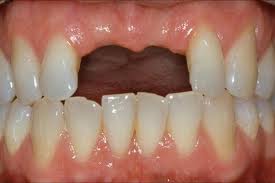 |
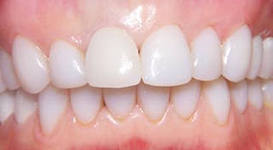 |
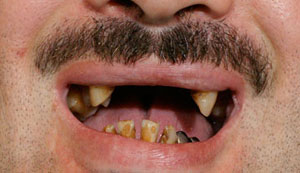 |
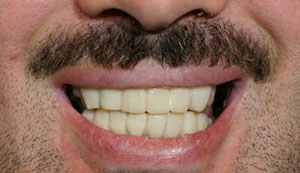 |
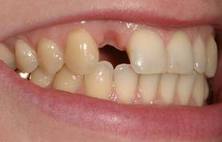 |
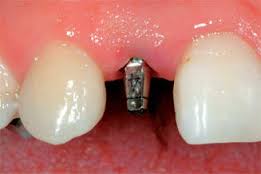 |
